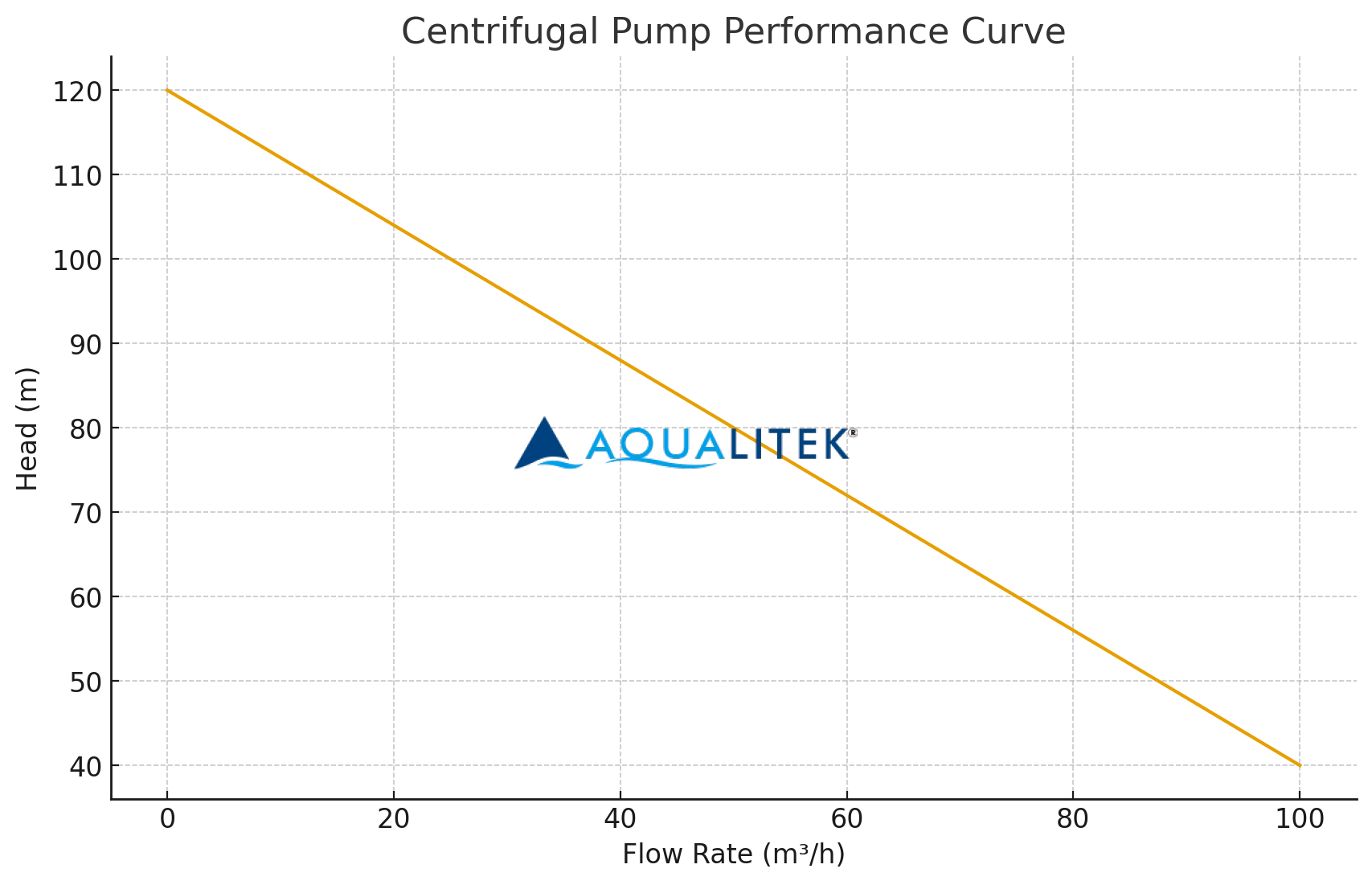How to Select High-Pressure Pumps for Industrial Reverse Osmosis (RO) Systems| Insights by AQUALITEK
This guide explains the key types of high-pressure pumps used in industrial RO systems—centrifugal pumps and plunger (positive displacement) pumps. It covers performance characteristics, selection criteria, and best application scenarios to help engineers achieve high efficiency, stability, and cost-effectiveness in RO water treatment design.
Introduction
High-pressure pumps are the core driving force of industrial RO systems. They supply sufficient pressure to overcome osmotic pressure and push water through RO membranes—determining system energy consumption, recovery, and long-term reliability. Choosing the right pump ensures stable permeate flow, reduces membrane fouling, and lowers operating cost.
Among many models, centrifugal pumps and plunger pumps are the most commonly applied in RO projects. Below is a comprehensive comparison and selection guide.
Common High-Pressure Pump Types for RO Systems
1️⃣ Centrifugal Pumps
Working principle: Convert rotational energy into fluid pressure via impellers.
Pressure range: Medium to high
Flow range: Medium to large
✔ Advantages
•Continuous and stable flow
•Low vibration and quiet operation
•Simple structure → easier maintenance
•Lower investment cost
•Widely available spare parts
✖ Disadvantages
•Efficiency decreases when operating off the design point
•Limited maximum pressure compared with plunger pumps
Centrifugal Pump Performance Curve
You can see the head decreases as flow increases, which means it is suitable for higher flow but medium-pressure RO applications.

Best applications:
•Brackish water RO (BWRO)
•Large municipal / industrial pure water systems
•Constant-flow desalination projects
2️⃣ Plunger Pumps (Positive Displacement)
Working principle: Reciprocating plungers apply direct pressure.
Pressure range: Very high
Flow range: Low to medium
✔ Advantages
•Very high pressure output → ideal for seawater RO
•High mechanical efficiency
•Precise pressure control (good under fluctuating feedwater)
✖ Disadvantages
•Pulsating flow → requires pulsation dampeners
•Higher vibration + maintenance cost
•Lubrication issues → risk of contamination in ultra-pure water applications
Plunger Pump Performance Curve
The head remains nearly constant across the flow range, making it ideal for high-pressure and seawater desalination RO systems.
 Best applications:
Best applications:
•Seawater desalination (SWRO)
•High-salinity or high-pressure industrial wastewater
•Small and high-pressure specialized systems
Pump Selection Criteria for RO System Design
|
Selection Factor |
Engineering Objective |
Recommended Pump |
|
Pressure requirement |
Overcome osmotic pressure + membrane pressure drop |
High pressure → Plunger |
|
Feed salinity |
SEAWATER vs. tap/brackish |
SWRO → Plunger |
|
System scale |
Capacity & redundancy |
Large flow → Centrifugal |
|
Water quality stability |
Turbidity/pressure fluctuations |
Plunger performs better |
|
Cost & OPEX |
Investment, energy, spare parts |
Centrifugal more cost-effective |
|
Noise & vibration limits |
Industrial compliance |
Centrifugal preferable |
Tips for Pump Configuration in RO Engineering
To maximize performance and lifespan:
|
Design Item |
Recommendation |
|
Material selection |
316L SS or Duplex SS for corrosion protection |
|
Energy efficiency |
Select pump to operate near Best Efficiency Point (BEP) |
|
Pressure stability |
VFD + pressure control loop |
|
Avoid rapid start-stop and pressure shock |
|
|
Pretreatment alignment |
Maintain SDI < 5 to reduce scaling on pump and RO stage |
Proper matching of pump, membrane, and pretreatment = lower fouling + lower cost + longer service life ✅
Conclusion
Choosing the right high-pressure pump is essential to RO performance. In general:
Centrifugal Pumps = Large flow, stable, cost-effective → Best for BWRO
Plunger Pumps = Ultra-high pressure, precise control → Best for SWRO
By evaluating pressure, salinity, water variability, and project economics, engineers can design pump configurations that ensure energy-efficient and reliable RO system operation.




Request More Information or Expert Advice
Share a few details, and we’ll provide deeper insights, tailored suggestions, or product support.

Our 500 LPH Reverse Osmosis (RO) System is engineered to provide high-quality purified water for commercial applications. Designed with advanced RO technology, durable components, and a user-friendly interface, this system ensures consistent performance, low maintenance, and long-term reliability.
With its compact design and robust skid-mounted frame, it’s an excellent choice for businesses that demand efficiency and quality in water purification.

BWE series Reverse Osmosis (RO) systems are pre-engineered and pre-assembled units with 8” membrane housings for brackish water(higher TDS).The large volumes can help meet your a variety of industrial applications.T hey are designed for overall superior performance, high recovery rates and offer great savings with low maintenance and operation costs.

-
An IBC (Intermediate Bulk Container) tank is a robust, reusable industrial-grade vessel designed for the storage and transport of liquids, powders, and granules. Its space-efficient cubic shape and integrated pallet base make it ideal for easy handling and stacking, offering a cost-effective solution for bulk quantities.

UV Water Sterilizer Systems are advanced water purification devices that utilize ultraviolet (UV) light to eliminate harmful microorganisms such as bacteria, viruses, and protozoa from water. These systems are highly effective, environmentally friendly, and do not require the use of chemicals, making them a popular choice for both residential and commercial applications. UV sterilizers are often used in conjunction with other filtration methods, such as reverse osmosis or carbon filters, to ensure comprehensive water treatment. They are easy to install, require minimal maintenance, and provide a reliable method for ensuring safe and clean drinking water.
Copyright © 2025 AQUALITEK. All rights reserved.



















AQT
AQT